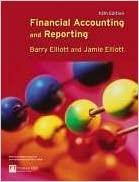Question
The following facts pertain to Lifecycle Corporation: Able owns a parcel of land (Land A) having a $30,000 FMV and $16,000 adjusted basis. Baker owns
The following facts pertain to Lifecycle Corporation: Able owns a parcel of land (Land A) having a $30,000 FMV and $16,000 adjusted basis. Baker owns an adjacent parcel of land (Land B) having a $20,000 FMV and $22,000 adjusted basis. On January 2, 2020, Able and Baker contribute their parcels of land to newly formed Lifecycle Corporation in exchange for 60% of the corporations stock for Able and 40% of the corporations stock for Baker. The corporation elects a calendar tax year and the accrual method of accounting. In all years, the corporation meets the small business exemption to being subject to the limitation on net business interest. On January 2, 2020, the corporation borrows $2 million and uses the loan proceeds to build a factory ($1 million), purchase equipment ($500,000), produce inventory ($450,000), pay other operating expenses ($30,000), and retain working cash ($20,000). Assume the corporation sells all inventory produced and collects on all sales immediately so that, at the end of any year, the corporation has no accounts receivable or inventory balances. Further assume the corporation does not elect Sec. 179 expensing but does claim 100% bonus depreciation for the entire $500,000 equipment cost. For E&P purposes, the corporation uses the alternative depreciation system. Operating results for 2020 are as follows: 6.1-11 Full Alternative Text In 2021, Lifecycle Corporation invests $10,000 of excess cash in Macro Corporation stock (less than 20% owned) and $20,000 in tax-exempt bonds. In addition, the corporation pays Able a $12,000 salary and distributes an additional $42,000 to Able and $28,000 to Baker. The corporation also makes a $100,000 principal payment on the loan. Results for 2021 are as follows: 6.1-12 Full Alternative Text In 2022, the corporation did not pay a salary to Able and made no distributions to the shareholders. The corporation, however, made a $30,000 principal payment on the loan. Results for 2022 are as follows: 6.1-13 Full Alternative Text 6.1-14 Full Alternative Text On January 2, 2023, the corporation sells its assets, pays taxes on the gain, and pays off the $1.87 million remaining debt. 6.1-15 Full Alternative Text Immediately after these transactions, the corporation makes a liquidating distribution of the remaining cash to Able and Baker. The remaining cash is $526,935, which the corporation distributes in proportion to the shareholders ownership (60% and 40%). Assume that the shareholders long-term capital gains will be taxed in 2023 at 23.8% (the 20% maximum capital gains rate plus the 3.8% rate on net investment income). Required: Determine the tax consequences of the corporate formation to Able, Baker, and Lifecycle Corporation. For 2020 through 2022, prepare schedules showing corporate taxable income, taxes, and E&P activity. Assume that Lifecycle pays its taxes in the same year they accrue. For 2023, prepare a schedule showing the results of this years transactions on Lifecycle Corporation, Able, and Baker. Note: See Problem C:10-52 for a partnership variation of this problem.
Step by Step Solution
There are 3 Steps involved in it
Step: 1

Get Instant Access to Expert-Tailored Solutions
See step-by-step solutions with expert insights and AI powered tools for academic success
Step: 2

Step: 3

Ace Your Homework with AI
Get the answers you need in no time with our AI-driven, step-by-step assistance
Get Started


